Here at Impact Catalysts, we spend a lot of time thinking and talking about nonprofit capital markets. Our working definition: “The breakdown of resources available from institutional philanthropy, individual philanthropy and government to address a specific social issue in a specific region.” While the term may not sound familiar, many social sector leaders have likely grappled with this topic when pouring over their organizations’ financial models and development plans.
Why do They Matter?
Capital markets are material to a nonprofit’s financial sustainability and impact. When we analyze capital markets for our nonprofit clients, we’re gauging the available financial resources and the competition for those resources, which then allows our clients to build realistic financial sustainability plans. And by identifying competition, we’re not advocating for the isolationist and cut-throat strategy that Nonprofit AF aptly calls the Nonprofit Hunger Games. Rather, nonprofits should be able to equip themselves with an awareness of the realities of their financial environment.
One of the challenges to understanding nonprofit capital markets is that we only know some portions of the larger picture of these markets. Free, up-to-date, and comprehensive data sets on all of these funding sources don’t exist.
Filling Out the Picture
Recently, our team decided to tackle the information challenge by focusing on a market we know well from previous work: food security in Massachusetts. Partnering with Project Bread and Philanthropy Massachusetts, we surveyed 100 food security organizations across the state on their revenue sources and fundraising practices, analyzed over 200 organizations’ financial data, and conducted secondary research on the food security sector. Our goal was to see if we could get a clearer picture of a capital market for a specific social issue by going directly to nonprofits themselves, rather than relying on public databases.
Some of the findings surprised us, while others confirmed experiences we’ve had with our clients. Here are some highlights:
- The work of nonprofit organizations addresses some, but not all, of the food insecurity in the state.
- Government is a major player both in direct assistance programs and in funding the work of some nonprofits.
- Although food insecurity persists across the state, there are fewer organizations and funders farther away from Boston.
- There is a greater diversity of revenue sources for organizations headquartered closer to Boston. Organizations headquartered farther away from Boston are more likely to be dependent on government funding.
While our research does not fully complete the picture of the capital market for food security in Massachusetts, our findings provide some clarity in a cloudy environment. But, as we point out to our clients, the devil is in the details, and the utility of this information lies in knowing how to use it as a strategy input. On March 29, we’re hosting a workshop in Boston for food security organizations, called “Seeding the Path to Financial Sustainability.” We’ll share our analytical framework for financial sustainability, the complete findings of our research, and facilitate a discussion about how attendees could apply this to their own organizations.
We invite you, or any food security leaders you may know, to join us on March 29th when we share our findings in greater detail.
Are you a nonprofit or philanthropic leader in another sector with questions about the capital market for your social issue? Please contact us at the bottom of this page—we’d love to explore those questions with you.
Note: To read more about nonprofit capital markets and why they’re important for philanthropy, as well, check out the blog post: “What’s a Nonprofit Capital Market? Why Does it Matter?” by Impact Catalysts’ President, Stephen Pratt. In this post, he explains how understanding capital markets shapes a philanthropy’s giving strategy.

